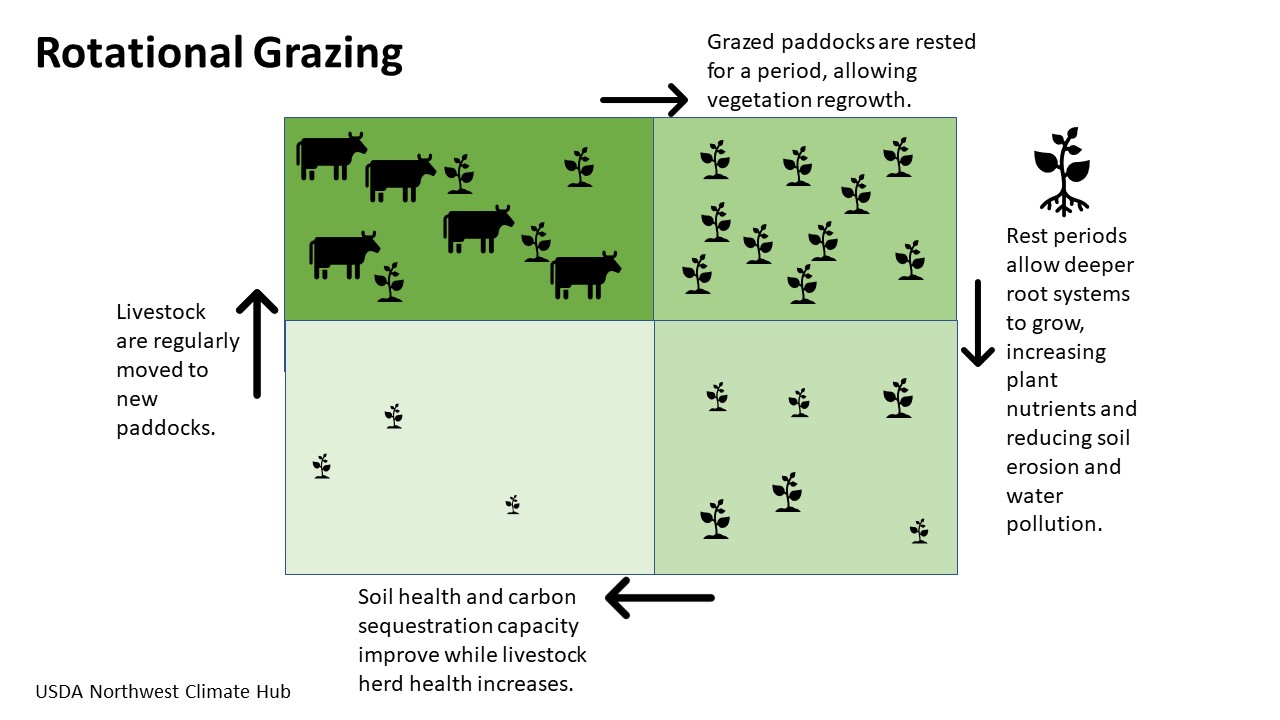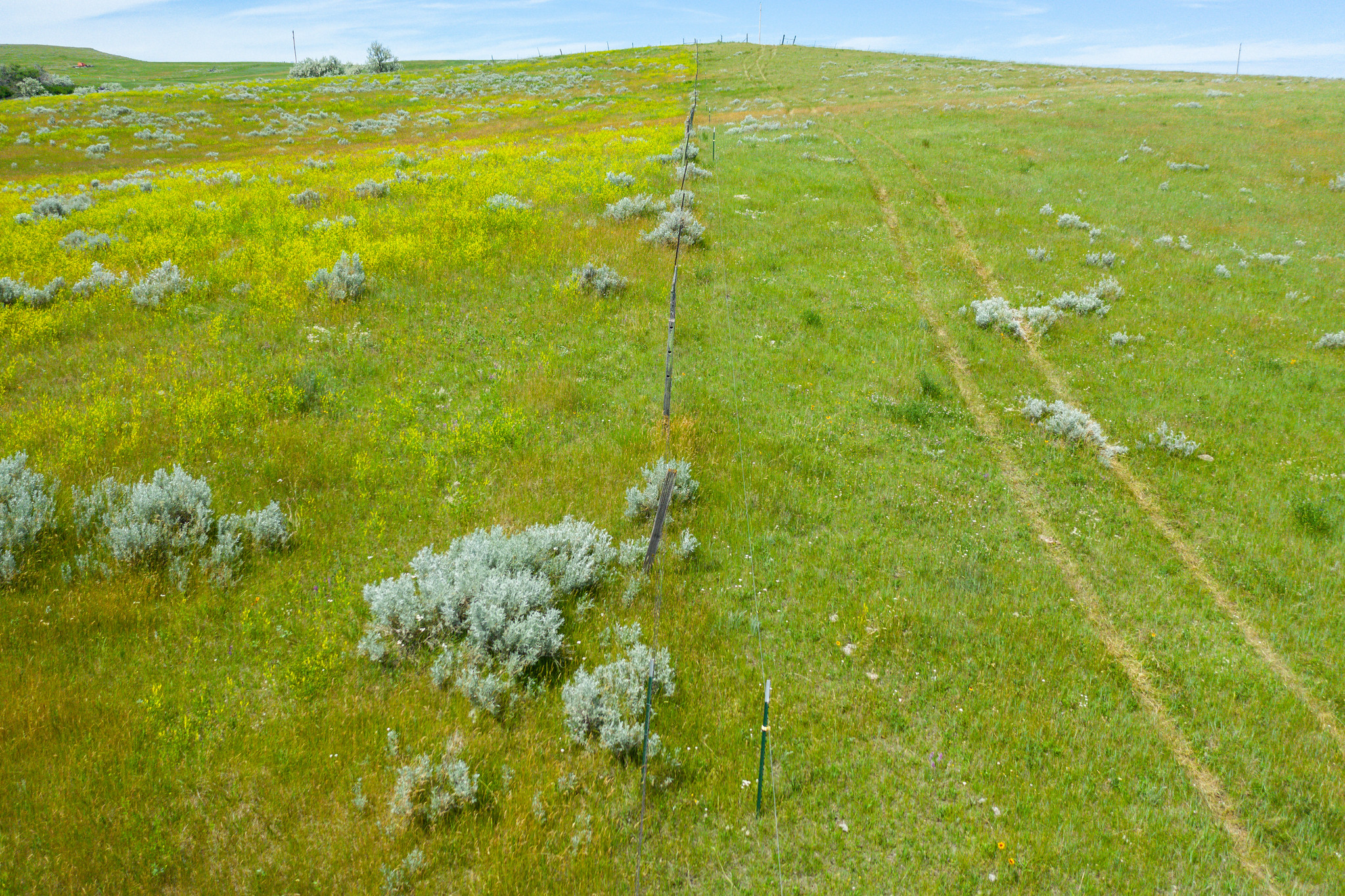With climate change, drought, increased temperatures, and extreme precipitation events are expected to intensify in many locations. Impacts from climate will limit productivity of farm and rangeland operations because of increases in livestock heat stress, soil erosion, and nutrient runoff into waterways, as well as reduction in forage quality and quantity. Using management practices that consider climate change can help to maintain productivity in the face of these challenges.
Rotational grazing could help ranchers, pastoralists, and farmers to mitigate and adapt to some climate change impacts. Rotational grazing involves the frequent movement of livestock through a series of pasture subdivisions called paddocks. This frequent movement allows plants to rest and regrow to grazing height while livestock graze other paddocks. The length of grazing and rest periods is ecosystem dependent and differs depending on forage yield. Each paddock must contain forage, water, and adequate shade. Rotational grazing has been implemented with livestock including cattle, sheep, goats, and horses.

Advantages
Rotational grazing has many potential environmental and economic advantages.
- Improves soil structure, biodiversity, cover, organic matter, and carbon sequestration
- Prevents overgrazing, reducing runoff, limiting soil erosion, and improving water quality
- Increases pasture drought resilience
- Better distributes nutrients from manure throughout a pasture
- Increases forage for livestock and animal productivity
- Reduces costs and increases profit
- Results in fewer herd health problems
- Makes livestock tamer and easier to move (with continuous handling)
- Reduces pesticide use
- Can reduce greenhouse gas emissions from livestock by eliminating manure storage facilities, improving forage quality, and sequestering soil organic carbon in rangelands
Disadvantages
- Requires more fencing and labor (though virtual fencing is an effective alternative to traditional fencing)
- Requires water and shade to be accessible in each paddock
- May result in soil compaction and degraded water quality if livestock are not moved regularly
- May increase internal parasites in irrigated rotational pastures (compared to rangelands)
- May only be effective on rangelands when combined with lower stock density
Additional considerations
Rotational grazing can be practiced on pastures and rangelands. Consult with pastoralists, ranchers, or other specialists currently practicing rotational grazing to create a system that fits specific farm, pasture, or rangeland needs. University Extension, Natural Resources Conservation Service, or other reputable grazing consultants can help. Agricultural producers interested in adopting rotational grazing on their land should keep rotational grazing layouts that are easy to implement.

To extend the grazing season, hay or forage land not currently being grazed could be brought into the pasture rotation for grazing in the summer and fall. Consider interseeding to improve and diversify forage in pastures. Observe paddocks closely to ensure that enough forage remains (moving animals before overgrazing occurs) and adequate pasture rest times occur per rotation. Allow animals with higher nutritional requirements access to the best forage possible. Consider supplemental feeding to meet the needs of livestock.
A good perimeter fence is required for rotational grazing. Virtual fencing or electric fencing such as single-strand high-tensile wire works well for pasture subdivisions. Movable or fixed water tubs connected to main pipelines can meet livestock water needs. Supply lines made from polyethylene tubing laid on the ground surface along fence lines can serve multiple paddocks.
In places where livestock are frequently moving, laneways can mitigate mud and erosion. Heavily used laneways may need underlayment with geotextile fabric and surfacing with durable material. After each milking, dairy cows should be moved to a fresh paddock. Beef cattle, horses, sheep, and goats can be moved less frequently (either daily or every few days). Protect animals from severe weather elements by giving them access to shade or shelter in each paddock.
Additional Resources
- A Guide to Rotational Grazing from the National Sustainable Agriculture Information Service provides resources for implementing the strategy.
- Rotational Grazing During Winter describes the process of implementing the strategy during winter.

